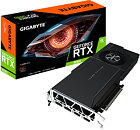Apr 18th, 2025 16:10 EDT
change timezone
Latest GPU Drivers
New Forum Posts
- How to relubricate a fan and/or service a troublesome/noisy fan. (242)
- It's happening again, melting 12v high pwr connectors (1027)
- RX 9000 series GPU Owners Club (393)
- Can Intel recover in DYI market anytime soon? (11)
- Place your bets, what node will rtx 6000/RDNA 5(UDNA 1?) use (8)
- TPU's Nostalgic Hardware Club (20257)
- GPU Pricing and Performance (15)
- What are you playing? (23396)
- Spoofer Modified SMBIOS/BIOS – Need Help Restoring Original Motherboard Info (TUF GAMING B550-PLUS WiFi II) (2)
- Tried installing 576.02 - installer window disappears (20)
Popular Reviews
- ASUS GeForce RTX 5060 Ti TUF OC 16 GB Review
- NVIDIA GeForce RTX 5060 Ti PCI-Express x8 Scaling
- Palit GeForce RTX 5060 Ti Infinity 3 16 GB Review
- G.SKILL Trident Z5 NEO RGB DDR5-6000 32 GB CL26 Review - AMD EXPO
- ASUS GeForce RTX 5060 Ti Prime OC 16 GB Review
- Teevolution Terra Pro Review
- MSI GeForce RTX 5060 Ti Gaming OC 16 GB Review
- Zotac GeForce RTX 5060 Ti AMP 16 GB Review
- MSI GeForce RTX 5060 Ti Gaming Trio OC 16 GB Review
- ASUS GeForce RTX 5080 TUF OC Review
Controversial News Posts
- NVIDIA GeForce RTX 5060 Ti 16 GB SKU Likely Launching at $499, According to Supply Chain Leak (182)
- NVIDIA Sends MSRP Numbers to Partners: GeForce RTX 5060 Ti 8 GB at $379, RTX 5060 Ti 16 GB at $429 (127)
- Nintendo Confirms That Switch 2 Joy-Cons Will Not Utilize Hall Effect Stick Technology (105)
- NVIDIA Launches GeForce RTX 5060 Series, Beginning with RTX 5060 Ti This Week (101)
- Over 200,000 Sold Radeon RX 9070 and RX 9070 XT GPUs? AMD Says No Number was Given (100)
- Nintendo Switch 2 Launches June 5 at $449.99 with New Hardware and Games (99)
- Sony Increases the PS5 Pricing in EMEA and ANZ by Around 25 Percent (85)
- NVIDIA PhysX and Flow Made Fully Open-Source (77)
News Posts matching #Turbo
Return to Keyword Browsing
ASUS Introduces New "AI Cache Boost" BIOS Feature - R&D Team Claims Performance Uplift
Large language models (LLMs) love large quantities of memory—so much so, in fact, that AI enthusiasts are turning to multi-GPU setups to make even more VRAM available for their AI apps. But since many current LLMs are extremely large, even this approach has its limits. At times, the GPU will decide to make use of CPU processing power for this data, and when it does, the performance of your CPU cache and DRAM comes into play. All this means that when it comes to the performance of AI applications, it's not just the GPU that matters, but the entire pathway that connects the GPU to the CPU to the I/O die to the DRAM modules. It stands to reason, then, that there are opportunities to boost AI performance by optimizing these elements.
That's exactly what we've found as we've spent time in our R&D labs with the latest AMD Ryzen CPUs. AMD just launched two new Ryzen CPUs with AMD 3D V-Cache Technology, the AMD Ryzen 9 9950X3D and Ryzen 9 9900X3D, pushing the series into new performance territory. After testing a wide range of optimizations in a variety of workloads, we uncovered a range of settings that offer tangible benefits for AI enthusiasts. Now, we're ready to share these optimizations with you through a new BIOS feature: AI Cache Boost. Available through an ASUS AMD 800 Series motherboard and our most recent firmware update, AI Cache Boost can accelerate performance up to 12.75% when you're working with massive LLMs.
That's exactly what we've found as we've spent time in our R&D labs with the latest AMD Ryzen CPUs. AMD just launched two new Ryzen CPUs with AMD 3D V-Cache Technology, the AMD Ryzen 9 9950X3D and Ryzen 9 9900X3D, pushing the series into new performance territory. After testing a wide range of optimizations in a variety of workloads, we uncovered a range of settings that offer tangible benefits for AI enthusiasts. Now, we're ready to share these optimizations with you through a new BIOS feature: AI Cache Boost. Available through an ASUS AMD 800 Series motherboard and our most recent firmware update, AI Cache Boost can accelerate performance up to 12.75% when you're working with massive LLMs.

Gigabyte Introduces Simplified X3D Turbo Mode Activation Through Aorus AI Snatch
GIGABYTE TECHNOLOGY Co. Ltd, a leading manufacturer of motherboards, graphics cards, and hardware solutions, announced a groundbreaking update to its X3D Turbo Mode feature, providing users with an intuitive new method to activate advanced gaming performance optimization directly through the AORUS AI SNATCH software.
Users can now easily enable the X3D Turbo Mode with a streamlined process:
Users can now easily enable the X3D Turbo Mode with a streamlined process:
- Run live update on GCC to get the latest AORUS AI SNATCH version B24.11.19.01
- Navigate to the flag icon in the lower-left corner
- Click the flag icon to activate X3D Turbo Mode
- Confirm the pop-up window by clicking "OK"
- System will automatically restart to activate the feature

ASUS Intros GeForce RTX 4070 Turbo Graphics Card with Lateral Flow Cooler
ASUS introduced the GeForce RTX 4070 Turbo, a performance segment graphics card with a lateral blower-type cooling solution that should make it ideal for restrictive airflow environments (such as a stack of them in an AI processing box). The card is strictly 2 slots thick, no taller than what constitutes full-height for addon cards (11.1 cm), and is 26.9 cm long. It lacks a backplate, so it could give a little more breathing room to its neighboring card. Its sole power connector, an 8-pin PCIe, is located at the tail end of the card, instead of the top, for additional clearance.
Internally, the ASUS Turbo RTX 4070 cooling solution features a copper base-plate, which conveys heat to an aluminium channel stack that's ventilated by a lateral blower. ASUS has given this blower a high endurance dual ball-bearing. The RTX 4070 GPU at the heart of the card runs at NVIDIA reference specs, with a 2475 MHz boost frequency, and a 21 Gbps GDDR6X memory speed. It features 12 GB of it across a 192-bit memory bus. There are two SMD switches on the card, the "Turbo" switch overrides software fan control and holds the fan on a steep fan-curve, hitting 100% even; while the VM_SW switch toggles between a "Quiet" and "Performance" mode, we don't know if this uses a dual-BIOS mechanism, or is a physical toggle for ASUS GPU Tweak software. ASUS didn't release pricing information.
Internally, the ASUS Turbo RTX 4070 cooling solution features a copper base-plate, which conveys heat to an aluminium channel stack that's ventilated by a lateral blower. ASUS has given this blower a high endurance dual ball-bearing. The RTX 4070 GPU at the heart of the card runs at NVIDIA reference specs, with a 2475 MHz boost frequency, and a 21 Gbps GDDR6X memory speed. It features 12 GB of it across a 192-bit memory bus. There are two SMD switches on the card, the "Turbo" switch overrides software fan control and holds the fan on a steep fan-curve, hitting 100% even; while the VM_SW switch toggles between a "Quiet" and "Performance" mode, we don't know if this uses a dual-BIOS mechanism, or is a physical toggle for ASUS GPU Tweak software. ASUS didn't release pricing information.

Microsoft Introduces 128-Core Arm CPU for Cloud and Custom AI Accelerator
During its Ignite conference, Microsoft introduced a duo of custom-designed silicon made to accelerate AI and excel in cloud workloads. First of the two is Microsoft's Azure Cobalt 100 CPU, a 128-core design that features a 64-bit Armv9 instruction set, implemented in a cloud-native design that is set to become a part of Microsoft's offerings. While there aren't many details regarding the configuration, the company claims that the performance target is up to 40% when compared to the current generation of Arm servers running on Azure cloud. The SoC has used Arm's Neoverse CSS platform customized for Microsoft, with presumably Arm Neoverse N2 cores.
The next and hottest topic in the server space is AI acceleration, which is needed for running today's large language models. Microsoft hosts OpenAI's ChatGPT, Microsoft's Copilot, and many other AI services. To help make them run as fast as possible, Microsoft's project Athena now has the name of Maia 100 AI accelerator, which is manufactured on TSMC's 5 nm process. It features 105 billion transistors and supports various MX data formats, even those smaller than 8-bit bit, for maximum performance. Currently tested on GPT 3.5 Turbo, we have yet to see performance figures and comparisons with competing hardware from NVIDIA, like H100/H200 and AMD, with MI300X. The Maia 100 has an aggregate bandwidth of 4.8 Terabits per accelerator, which uses a custom Ethernet-based networking protocol for scaling. These chips are expected to appear in Microsoft data centers early next year, and we hope to get some performance numbers soon.
The next and hottest topic in the server space is AI acceleration, which is needed for running today's large language models. Microsoft hosts OpenAI's ChatGPT, Microsoft's Copilot, and many other AI services. To help make them run as fast as possible, Microsoft's project Athena now has the name of Maia 100 AI accelerator, which is manufactured on TSMC's 5 nm process. It features 105 billion transistors and supports various MX data formats, even those smaller than 8-bit bit, for maximum performance. Currently tested on GPT 3.5 Turbo, we have yet to see performance figures and comparisons with competing hardware from NVIDIA, like H100/H200 and AMD, with MI300X. The Maia 100 has an aggregate bandwidth of 4.8 Terabits per accelerator, which uses a custom Ethernet-based networking protocol for scaling. These chips are expected to appear in Microsoft data centers early next year, and we hope to get some performance numbers soon.

ASUS Gives GeForce RTX 3070 the Turbo Lateral Blower Treatment
ASUS today rolled out the GeForce RTX 3070 Turbo graphics card. Given that the company built lateral-airflow coolers for even the 350 W RTX 3090, such a card based on the RTX 3070 should come as little surprise. ASUS designs these cards for cases with airflow restrictions. The card is strictly 2 slots thick and full-height. It uses a lateral blower-type cooling solution that uses a vapor-chamber plate and a copper channel-type heatsink; and a lateral fan that uses double-ball bearing. The card draws power from a pair of 8-pin PCIe power connectors located along the tail end, rather than on the top. The card sticks to NVIDIA-reference clock speeds of up to 1725 MHz GPU Boost, and 14 Gbps (GDDR6-effective) memory; although a software-activated "OC Mode" can run it up to 1755 MHz. Display outputs include three DisplayPort 1.4a, and one HDMI 2.1 connectors. The company didn't reveal pricing or availability information.

ASUS Intros GeForce RTX 3090 Turbo OC with a Lateral Blower
ASUS looks to one-up GIGABYTE by pairing a 350-Watt GeForce RTX 3090 with a classic lateral blower cooling solution, by introducing its new RTX 3090 Turbo OC graphics card (model: TURBO-RTX3090-24G). ASUS claims that the card is designed for "environments with restricted airflow." The card is strictly 2 slots thick, and just about qualifies for "full height" (measures 26.8 cm in length and 11.3 cm in height). It uses two 8-pin PCIe power inputs, which are located at the tail end of the card, instead of the top. These connectors are right next to mounts for extenders for workstation cases.
The ASUS RTX 3090 Turbo OC uses an 80 mm lateral blower with a double ball-bearing; which guides air through a copper-channel heatsink that uses a vapor-chamber plate to pull heat from the GPU and memory. An aluminium secondary base-plate pulls heat from the various VRM components and conveys it to the vapor-chamber plate. The card also offers a mild software-activated OC mode, which dials up the GPU Boost frequency to 1725 MHz (up from 1695 MHz reference). The memory is untouched at 19.5 Gbps (GDDR6X-effective). Display outputs include one HDMI 2.1, and three DisplayPort 1.4a. The company didn't reveal pricing.
The ASUS RTX 3090 Turbo OC uses an 80 mm lateral blower with a double ball-bearing; which guides air through a copper-channel heatsink that uses a vapor-chamber plate to pull heat from the GPU and memory. An aluminium secondary base-plate pulls heat from the various VRM components and conveys it to the vapor-chamber plate. The card also offers a mild software-activated OC mode, which dials up the GPU Boost frequency to 1725 MHz (up from 1695 MHz reference). The memory is untouched at 19.5 Gbps (GDDR6X-effective). Display outputs include one HDMI 2.1, and three DisplayPort 1.4a. The company didn't reveal pricing.

GIGABYTE Unveils RTX 3090 TURBO: For When You Absolutely Need Lateral Blowers for 350W GPUs
Perhaps the most unique GeForce RTX 3090 offerings from GIGABYTE has to be the Turbo Edition. Possibly its most cost-effective card based on the $1,500 GPU, the Turbo Edition features a classic lateral-blower based cooling solution that guides all its air through an aluminium channel-type heatsink, and out of the rear bracket, with none of it exhausted into the case. This is a bold choice for a cooler given the feisty 350 W typical board power for the RTX 3090. The card is exactly 2 slots thick, and just 26.6 cm long, making it possibly the shortest air-cooled RTX 3090. It's a little over 11 cm tall (standard full-height). An interesting design choice by GIGABYTE is to locate the card's two 8-pin PCIe power connectors at the tail end of the card. GIGABYTE didn't reveal whether the card features factory-overclocked speeds, but we expect it to stick to reference speeds. Display outputs include two each of HDMI 2.1 and DisplayPort 1.4a connectors.

MSI Announces AMD A520 Motherboards
MSI, the world-leading motherboard manufacturer, proudly announces AMD A520 series motherboards. Ever since AMD launched Ryzen Desktop Processors with AM4 platform, MSI has occupied the market with its AM4 motherboards. A520 is the successor of A320, which does not support PCIe 4.0 and upgrades all PCIe 2.0 lanes to PCIe 3.0. With the support of 7 nm 3rd Gen Ryzen and Ryzen 4000 G-series processors, A520 is the best choice for Ryzen 3 and Ryzen 3 PRO processors.
Together with the AM4 Ryzen processors, MSI offers an A520 motherboard lineup from MAG Series to PRO Series with MSI's exclusive features to satisfy all types of users' needs. Exclusive DDR4 Boost and A-XMP provide stability and compatibility to memory and push its performance up to 4600 MHz. Moreover, all MSI A520 motherboards adopt a premium 2 oz thickened copper PCB to provide better performance and stability.
Together with the AM4 Ryzen processors, MSI offers an A520 motherboard lineup from MAG Series to PRO Series with MSI's exclusive features to satisfy all types of users' needs. Exclusive DDR4 Boost and A-XMP provide stability and compatibility to memory and push its performance up to 4600 MHz. Moreover, all MSI A520 motherboards adopt a premium 2 oz thickened copper PCB to provide better performance and stability.

Cooler Master Outs Hyper 212 ARGB Turbo CPU Cooler
Cooler Master rolled out an updated version of its Hyper 212 Turbo dual-fan tower-type CPU air cooler, the Hyper 212 ARGB Turbo. This cooler is almost identical to the Hyper 212 RGB Turbo and the LED Turbo; except that it packs a pair of Sickleflow 120 ARGB fans with an updated addressable RGB LED setup. The cooler includes an ARGB controller module to which you plug in the 3-pin ARGB cables of both fans, which then lets you cycle between a presets, pulling power from a SATA power connection; although you can directly plug in the fans to any 3-pin ARGB headers.
The heatsink at the heart of the Hyper 212 ARGB Turbo is standard CM 212 issue - an aluminium fin-stack tower with four 6 mm-thick copper heat pipes that make direct contact with the CPU at the base. The "Turbo" moniker is from the fact that two 120 mm fans are included in the package, which ventilate the heatsink in a push-pull arrangement. Each of the two Sickleflow 120 ARGB spinners does 650 - 1800 RPM, pushing 61 CFM of air at top speed, with a noise output of 27 dBA (max). With its fans in place, the cooler measures 120 mm x 109 mm x 155 mm (WxDxH). Among the CPU socket types supported are LGA2066, LGA1200, LGA115x, and AM4. We expect this cooler to be priced around $50.
Update May 7th: Cooler Master confirmed to us that this cooler will initially only be released in the Asia-Pacific region, before making it to Europe, while not being sold in North America.
The heatsink at the heart of the Hyper 212 ARGB Turbo is standard CM 212 issue - an aluminium fin-stack tower with four 6 mm-thick copper heat pipes that make direct contact with the CPU at the base. The "Turbo" moniker is from the fact that two 120 mm fans are included in the package, which ventilate the heatsink in a push-pull arrangement. Each of the two Sickleflow 120 ARGB spinners does 650 - 1800 RPM, pushing 61 CFM of air at top speed, with a noise output of 27 dBA (max). With its fans in place, the cooler measures 120 mm x 109 mm x 155 mm (WxDxH). Among the CPU socket types supported are LGA2066, LGA1200, LGA115x, and AM4. We expect this cooler to be priced around $50.
Update May 7th: Cooler Master confirmed to us that this cooler will initially only be released in the Asia-Pacific region, before making it to Europe, while not being sold in North America.

Bitspower Intros Lotan VGA Water Block for ASUS Turbo GeForce RTX 2070 SUPER EVO
The Turbo GeForce RTX 2070 Super EVO from ASUS (pictured below) is the company's cheapest RTX 2070 Super card, featuring a lateral-blower cooling solution. It also presents the cheapest route to a water-cooled RTX 2070 Super, when paired with a compatible water block. Bitspower released just that. The Lotan VGA Block variant bearing model number "BP-VG2070SATEVO" is purpose-built for the Turbo EVO RTX 2070 Super card by ASUS.
The pseudo full-coverage block is slightly over two slots thick, measuring 232 mm x124 mm x 28 mm. It uses nickel-plated copper as its primary material, with a clear acrylic top that extends to the length of the card. The top is studded with addressable RGB LEDs, which take in standard 3-pin ARGB input. The block features four G1/4" threads. Available now, the Lotan BP-VG2070SATEVO is priced at USD $154.
The pseudo full-coverage block is slightly over two slots thick, measuring 232 mm x124 mm x 28 mm. It uses nickel-plated copper as its primary material, with a clear acrylic top that extends to the length of the card. The top is studded with addressable RGB LEDs, which take in standard 3-pin ARGB input. The block features four G1/4" threads. Available now, the Lotan BP-VG2070SATEVO is priced at USD $154.

Intel Core i3-10100 Put Through SANDRA, Beats i3-9100 by 31% in Multimedia Tests
Intel's 10th generation Core desktop processor lineup, based on the 14 nm "Comet Lake" silicon, will begin with the Core i3-10100 succeeding the Core i3-9100 and i3-8100. To squeeze the most out of the microarchitecture that's essentially identical to "Skylake," Intel has decided to enable HyperThreading across the Core processor family, which means the i3-10100 is a 4-core/8-thread chip. Interestingly, Intel has given it just 6 MB of shared L3 cache. It's likely that the slightly beefed up i3-103xx will be differentiated with 8 MB of L3 cache. The chip has the same 3.60 GHz nominal frequency, and an unknown degree of Turbo Boost. The current-gen i3-9100 features Turbo Boost, so it's likely that its successor will also get the feature.
A SiSoft SANDRA online database entry for the i3-10100 surfaced, where it has an overall score of 382.61 MPix/s using multimedia tests, a significal step up from the roughly 290 MPix/s of the i3-9100 (a 31 percent performance increase). This increase in performance can be attributed to HyperThreading, as SANDRA's multimedia tests leverage it efficiently. Intel is expected to launch the Core i3-10100 around the $120 mark, competing with AMD's Ryzen 3 3200G.
A SiSoft SANDRA online database entry for the i3-10100 surfaced, where it has an overall score of 382.61 MPix/s using multimedia tests, a significal step up from the roughly 290 MPix/s of the i3-9100 (a 31 percent performance increase). This increase in performance can be attributed to HyperThreading, as SANDRA's multimedia tests leverage it efficiently. Intel is expected to launch the Core i3-10100 around the $120 mark, competing with AMD's Ryzen 3 3200G.

Windows 10 2H19 Update to Have "Favored Core" Awareness, Increase Single-threaded Performance
The next big update to Windows 10, slated for some time later this year, will have awareness to "favored cores." This leverages the ability of some of the latest processors to tell the operating system which of its cores are marginally "better" than the other, so it could push more of its single-threaded workloads to that core, for the highest boost clocks. Not all cores on a multi-core processor die are created equal, due to minor variations in manufacturing. Intel processors featuring Turbo Boost Max 3.0, as well as AMD Ryzen processors, have the ability to tell the operating system which of its cores are "better" than the other, which core is the "best" on the die, which is the "best" in a particular CCX (in case of "Zen" chips), and so on.
The best cores on a silicon are called "favored cores," and proper OS-level optimization could improve performance on 1-4 threaded workloads by "up to 15 percent," according to Intel. This, however, requires the processor to support Turbo Boost Max 3.0, which currently only HEDT processors do in the Intel camp. Over in the AMD front, Microsoft introduced more awareness to the multi-CCX and multi-die design of "Zen" processors with Windows 10 1903, and schedules workloads to make the most out of Zen's multi-core topology. "Zen" processors are able to report their best cores per CCX, per die, and per package, and the Ryzen Master software already displays this information, however, Windows hasn't been able to exploit favored cores. This will change with the upcoming major Windows 10 update.
The best cores on a silicon are called "favored cores," and proper OS-level optimization could improve performance on 1-4 threaded workloads by "up to 15 percent," according to Intel. This, however, requires the processor to support Turbo Boost Max 3.0, which currently only HEDT processors do in the Intel camp. Over in the AMD front, Microsoft introduced more awareness to the multi-CCX and multi-die design of "Zen" processors with Windows 10 1903, and schedules workloads to make the most out of Zen's multi-core topology. "Zen" processors are able to report their best cores per CCX, per die, and per package, and the Ryzen Master software already displays this information, however, Windows hasn't been able to exploit favored cores. This will change with the upcoming major Windows 10 update.

Possible Listings of AMD Ryzen 9 3800X, Ryzen 7 3700X, Ryzen 5 3600X Surface in Online Stores
Remember to bring your osmosis process to the table here, as a good deal of salt is detected present in this story's environment. Some online webstores from Vietnam and Turkey have started listing AMD's 3000 series CPUs based on the Zen 2 architecture. The present company stands at a Ryzen 9 3800X, Ryzen 7 3700X, and Ryzen 5 3600X, and the specs on these are... Incredible, to say the least.
The Ryzen 9 3800X is being listed with 32 threads, meaning a base 16-core processor. Clock speeds are being reported as 3.9 GHz base with up to 4.7 GHz Turbo on both a Turkish and Vietnamese etailer's webpages. The Turkish Store then stands alone in listing AMD's Ryzen 7 3700X CPU, which is reported as having 12 cores, 24 threads, and operating at an extremely impressive 4.2 GHz base and 5.0 GHz Boost clocks. Another listing by the same website, in the form of the Ryzen 5 3600X, details the processor as having 8 physical cores and running at 4.0 GHz base and 4.8 Boost clocks.
The Ryzen 9 3800X is being listed with 32 threads, meaning a base 16-core processor. Clock speeds are being reported as 3.9 GHz base with up to 4.7 GHz Turbo on both a Turkish and Vietnamese etailer's webpages. The Turkish Store then stands alone in listing AMD's Ryzen 7 3700X CPU, which is reported as having 12 cores, 24 threads, and operating at an extremely impressive 4.2 GHz base and 5.0 GHz Boost clocks. Another listing by the same website, in the form of the Ryzen 5 3600X, details the processor as having 8 physical cores and running at 4.0 GHz base and 4.8 Boost clocks.

Intel Readies Energy-efficient 35-Watt Core i9-9900T Processor
Intel succeeded in bringing down the TDP of its 8-core/16-thread "Coffee Lake-Refresh" silicon all the way down to a staggering 35 W, from its currently rated 95 W, which in real-world usage easily exceeds 110 W, given Turbo Boost, and other performance enhancements enabled by DIY motherboards. The new Core i9-9900T achieves its TDP with a combination of significantly lower clock-speeds, and an aggressive on-die power-management system. Its nominal-clock is down to 1.70 GHz from 3.60 GHz of the original i9-9900K, while 1~2 core Turbo Boost frequency is down to 3.80 GHz from 5.00 GHz of the original. The all-core Turbo clock-speed could be as low as 3.30 GHz. Intel hasn't tinkered with the L3 cache amount, which is still set at 16 MB, and the UHD 630 iGPU retains its EU count and clock-speeds. The chip features its 4-character product code of QQC0.

ASUS Intros GeForce RTX 2070 Turbo EVO Graphics Card, Ditches VirtualLink
ASUS today introduced an "affordable" GeForce RTX 2070 graphics card and a variation of its cheapest RTX 2070 product, the Turbo EVO. This card looks almost identical to the RTX 2070 Turbo ASUS launched last September, but comes with a handful physical changes. To begin with, its 80 mm lateral-blower fan comes with a double ball-bearing motor, and an IP5X-compliant dust-proof impeller. The build quality is also improved since ASUS is building the card on a fully-automated process it calls "Auto Extreme," coupled with a 144-hour stress-test for each card. Also, while the original RTX 2070 Turbo draws power from a combination of 8-pin and 6-pin PCIe power connectors, the new RTX 2070 Turbo EVO only needs a single 8-pin PCIe power input.
There is a catch, though. Unlike the original RTX 2070 Turbo, the new RTX 2070 Turbo EVO lacks a USB type-C VirtualLink connector. The clock-speeds of both cards are identical, with 1620 MHz GPU Boost, and 14 Gbps (GDDR6-effective) memory. You can tell the two cards apart on a store shelf by paying attention to the box. The EVO's box features an "Auto Extreme" graphic on the front face, and carries the model number "TURBO-RTX2070-8G-EVO," while the original RTX 2070 Turbo goes with "TURBO-RTX2070-8G" (no "EVO"). The company didn't reveal pricing, although it wouldn't surprise us if both the cards are sold at the same baseline price of USD $530.
There is a catch, though. Unlike the original RTX 2070 Turbo, the new RTX 2070 Turbo EVO lacks a USB type-C VirtualLink connector. The clock-speeds of both cards are identical, with 1620 MHz GPU Boost, and 14 Gbps (GDDR6-effective) memory. You can tell the two cards apart on a store shelf by paying attention to the box. The EVO's box features an "Auto Extreme" graphic on the front face, and carries the model number "TURBO-RTX2070-8G-EVO," while the original RTX 2070 Turbo goes with "TURBO-RTX2070-8G" (no "EVO"). The company didn't reveal pricing, although it wouldn't surprise us if both the cards are sold at the same baseline price of USD $530.

GIGABYTE Announces AORUS Turbo RTX 2080 Ti Graphics Card
After some leaks indicated that GIGABYTE was preparing a blower-style RTX 2080 Ti, the company has now officially unveiled it. The GIGABYTE AORUS Turbo RTX 2080 Ti feature a blower-style cooler with vapor-chamber, direct-touch technology trying to keep that monstrous, 754 mm² TU102 chip cool and quiet. Luckily, the chip is relatively power efficient, so the acoustic and thermal performance should be sufficient.
The GIGABYTE AORUS Turbo RTX 2080 Ti features a 1650 MHz core clock, and the other specs line up with what we've become used to with RTX 2080 Ti graphics cards (11 GB of GDDR6 memory at 14000 MHz). There's the typical 3x DisplayPort, 1x HDMI, and 1x USB Type-C for VirtuaLink. Expect this version of the RTX 2080 Ti to be near the bottom rung in terms of pricing, when it's available.
The GIGABYTE AORUS Turbo RTX 2080 Ti features a 1650 MHz core clock, and the other specs line up with what we've become used to with RTX 2080 Ti graphics cards (11 GB of GDDR6 memory at 14000 MHz). There's the typical 3x DisplayPort, 1x HDMI, and 1x USB Type-C for VirtuaLink. Expect this version of the RTX 2080 Ti to be near the bottom rung in terms of pricing, when it's available.

GIGABYTE Prepares AORUS Turbo GeForce RTX 2080 Ti, Features Blower-style Cooler
GIGABYTE looks to expand their NVIDIA GeForce RTX 2080 Ti lineup with the AORUS Turbo. This new offering features a blower-style cooler with a plastic shroud and no backplate. Considering the AORUS brand is typically enthusiast focused along with the fact GIGABYTE themselves already offer an RTX 2080 Ti with a blower-style cooler makes the AORUS Turbo a bit of a head-scratcher. Comparing the two shows the plastic shroud has been altered, however, outward appearance aside it is likely that the AORUS Turbo uses the same cooler as the GIGABYTE RTX 2080 Ti Turbo, which features a large vapor chamber cooler paired with a high-efficiency aluminium heatsink.
Meanwhile, power delivery is handled by two 8-pin PCIe connectors which are the standard for RTX 2080 Ti graphics cards. Display connectivity consists of three Displayport connectors, one HDMI connector, and a USB-C connector with VritualLink support. Other than that, full specifications and pricing are currently unknown. However, it can be speculated that the AORUS Turbo RTX 2080 Ti will feature stock clocks of 1545 MHz on the core and 14000 MHz on the memory with a price that should be close to MSRP at least in theory.
Meanwhile, power delivery is handled by two 8-pin PCIe connectors which are the standard for RTX 2080 Ti graphics cards. Display connectivity consists of three Displayport connectors, one HDMI connector, and a USB-C connector with VritualLink support. Other than that, full specifications and pricing are currently unknown. However, it can be speculated that the AORUS Turbo RTX 2080 Ti will feature stock clocks of 1545 MHz on the core and 14000 MHz on the memory with a price that should be close to MSRP at least in theory.

ASUS RTX 2080 Turbo (Baseline) Cards Come with TU104 "A" Chips
The GeForce RTX 2080 Turbo from ASUS is supposed to be a "baseline" RTX 2080 product, which the company can sell at $699, or closest to it. These boards were found to feature the TU104-400A-A1 variant of the TU104 silicon, which NVIDIA allows its add-in card (AIC) partners to ship factory-overclocked speeds with. At this point it's not known if all ASUS RTX 2080 Turbo cards feature the "A" variant TU104 chips, or if it's a lottery. Given that the ASUS RTX 2080 Turbo's PCB is largely based on NVIDIA's reference design, PC Games Hardware (PCGH) has been able to successfully flash the card's BIOS with that of the RTX 2080 Founders Edition cards based on the reference PCB, which have power-limits increased to the tune of 307 W, which facilitates not just higher GPU Boost frequencies, but also better sustainability of elevated boost clock states.
With its "Turing" family of GPUs, NVIDIA created ASIC variants along the lines of chips that board partners are allowed to factory-overclock, and those that they aren't. You can read all about that in our older article. Normally, the TU104-400-A1 silicon is intended for baseline cards such as the ASUS RTX 2080 Turbo, whereas the TU104-400A-A1 goes into factory-overclocked products such as ASUS RTX 2080 ROG Strix. The discovery of TU104-400A-A1 on the ASUS RTX 2080 Turbo makes it the cheapest option for enthusiasts wanting to flash it with BIOS of other reference-PCB based cards that have TU104-400A-A1 chips to increase power limits, and then simply pairing the card with custom liquid cooling, to manually overclock further, thanks to the increased power limits. We're not sure you can flash Founders Edition BIOS on cards that have reference-design PCBs but non-A ASICs.
With its "Turing" family of GPUs, NVIDIA created ASIC variants along the lines of chips that board partners are allowed to factory-overclock, and those that they aren't. You can read all about that in our older article. Normally, the TU104-400-A1 silicon is intended for baseline cards such as the ASUS RTX 2080 Turbo, whereas the TU104-400A-A1 goes into factory-overclocked products such as ASUS RTX 2080 ROG Strix. The discovery of TU104-400A-A1 on the ASUS RTX 2080 Turbo makes it the cheapest option for enthusiasts wanting to flash it with BIOS of other reference-PCB based cards that have TU104-400A-A1 chips to increase power limits, and then simply pairing the card with custom liquid cooling, to manually overclock further, thanks to the increased power limits. We're not sure you can flash Founders Edition BIOS on cards that have reference-design PCBs but non-A ASICs.

ASUS Announces Its NVIDIA RTX 2070 Graphics Card Lineup
ASUS has revealed their entire lineup, interpreting NVIDIA's RTX 2070 silicon (and its TU106 die, a first - remember that **70-class cards previously featured cut-down versions of the full NVIDIA chip). There aren't many surprised here - ASUS has already spent enough R&D in previous years so as to only need to minimally iterate on their designs for each new generation.
The ROG Strix graphics cards sit at the top of the heap, featuring the company's DirectCU III cooling tech (triple fan) in a 2.5-slot design. RGB lighting and dual BIOS support are par of the course by now, as are some of the other features - backplate and metal brace included. Connectivity-wise there are 2x HDMI 2.0b ports, 2x DisplayPort 1.4 outputs, and 1x USB Type-C port for VirtuaLink. The graphics card draws power from the 6-pin and 8-pin PCIe power connectors and will be available in three versions (Gaming OC, Gaming Advanced, and Gaming) according to factory overclocks.
The ROG Strix graphics cards sit at the top of the heap, featuring the company's DirectCU III cooling tech (triple fan) in a 2.5-slot design. RGB lighting and dual BIOS support are par of the course by now, as are some of the other features - backplate and metal brace included. Connectivity-wise there are 2x HDMI 2.0b ports, 2x DisplayPort 1.4 outputs, and 1x USB Type-C port for VirtuaLink. The graphics card draws power from the 6-pin and 8-pin PCIe power connectors and will be available in three versions (Gaming OC, Gaming Advanced, and Gaming) according to factory overclocks.

Intel Core i7-9700K Overclocked to 5.5 GHz on Water, Cinebenched
Intel's upcoming Core i7-9700K processor is the first Core i7 SKU to lack HyperThreading, but that isn't stopping the chip with 8 physical cores from edging past its predecessor posting strong multi-threaded performance. Chinese publication ZOL managed to overclock the chip to 5.50 GHz under liquid cooling with all its cores enabled, by simply dialing up the unlocked multiplier to 55.0X, and a rather high 1.535V core voltage.
The overclocked i7-9700K was put through Cinebench R15, where it scored 250 points in the single-threaded test, and 1827 points in the multi-threaded one, a 7.31x multiprocessing ratio. A current-generation 6-core/12-thread Core i7-8700K typically manages around 1550 points at stock speeds (at least 4.30 GHz all-core Turbo Boost frequency), in the multi-threaded test. The i7-9700K could hence be less ahead of its predecessor than hoped. It's the 8-core/16-thread Core i9-9900K, which could grab enthusiasts' attention (and monies).
The overclocked i7-9700K was put through Cinebench R15, where it scored 250 points in the single-threaded test, and 1827 points in the multi-threaded one, a 7.31x multiprocessing ratio. A current-generation 6-core/12-thread Core i7-8700K typically manages around 1550 points at stock speeds (at least 4.30 GHz all-core Turbo Boost frequency), in the multi-threaded test. The i7-9700K could hence be less ahead of its predecessor than hoped. It's the 8-core/16-thread Core i9-9900K, which could grab enthusiasts' attention (and monies).

ASUS GeForce RTX 2080 and RTX 2080 Ti Pictured
It's not just GIGABYTE, even ASUS has several of its graphics cards leaked to the web. We see pictures of at least three products by the company, an ROG Strix-branded RTX 2080, a cheaper RTX 1080 Dual, and a rather basic-looking RTX 2080 Ti. The new-generation DirectCU III cooler introduced with the ROG Strix RTX 2080 looks more menacing than ever. The 2.5-slot cooler appears to feature two large aluminium fin-stacks, ventilated by three 100 mm spinners, with up to 5 copper heat pipes making direct contact with the GPU at the base. The RTX 2080 Dual features a much simpler fin-stack cooler, ventilated by just two 90 mm spinners. The RTX 2080 Ti Turbo features a lateral-blower cooler, and may be priced on par with NVIDIA's reference design.

ASUS ROG STRIX 1070 Ti, Turbo Graphics Cards Pictured
Videocardz has done it again, and have gotten their hands on manufacturer's images of as of yet unreleased graphics cards. This time, it's ASUS' products that have been brought to the limelight, with not one, but two custom versions of their upcoming GeForce GTX 1070 Ti graphics cards being pictures next to their retail boxes.
The first graphics card is the 1070 Ti Turbo (TURBO-GTX1070TI-8G), which like most ASUS Turbo models, should be among the cheapest 1070 Ti options - it forfeits any additional engineering besides NVIDIA's reference design, and adds ASUS' Turbo blower-type cooler. The 1070 Ti STRIX (ROG-STRIX-GTX1070TI-A8G-GAMING), on the other hand, is a custom-engineered version of the GTX 1070 (GP-104) silicon, and should come with the same higher margins as other ASUS custom products. A mainstay of ASUS STRIX designs is the presence of Aura Sync RGB lighting control, and a triple-fan configuration, which should bring operating temperatures down considerably. We should start seriously considering the chance that we'll see an as of yet unannounced NVIDIA graphics card actually launch with custom partner designs before custom versions of AMD's Vega graphics cards ever hit the retail channel. Though to be fair, it's much easier for AIB partners to simply recycle NVIDIA custom designs for this particular graphics card than design an entirely new one for AMD's Vega.
The first graphics card is the 1070 Ti Turbo (TURBO-GTX1070TI-8G), which like most ASUS Turbo models, should be among the cheapest 1070 Ti options - it forfeits any additional engineering besides NVIDIA's reference design, and adds ASUS' Turbo blower-type cooler. The 1070 Ti STRIX (ROG-STRIX-GTX1070TI-A8G-GAMING), on the other hand, is a custom-engineered version of the GTX 1070 (GP-104) silicon, and should come with the same higher margins as other ASUS custom products. A mainstay of ASUS STRIX designs is the presence of Aura Sync RGB lighting control, and a triple-fan configuration, which should bring operating temperatures down considerably. We should start seriously considering the chance that we'll see an as of yet unannounced NVIDIA graphics card actually launch with custom partner designs before custom versions of AMD's Vega graphics cards ever hit the retail channel. Though to be fair, it's much easier for AIB partners to simply recycle NVIDIA custom designs for this particular graphics card than design an entirely new one for AMD's Vega.
Apr 18th, 2025 16:10 EDT
change timezone
Latest GPU Drivers
New Forum Posts
- How to relubricate a fan and/or service a troublesome/noisy fan. (242)
- It's happening again, melting 12v high pwr connectors (1027)
- RX 9000 series GPU Owners Club (393)
- Can Intel recover in DYI market anytime soon? (11)
- Place your bets, what node will rtx 6000/RDNA 5(UDNA 1?) use (8)
- TPU's Nostalgic Hardware Club (20257)
- GPU Pricing and Performance (15)
- What are you playing? (23396)
- Spoofer Modified SMBIOS/BIOS – Need Help Restoring Original Motherboard Info (TUF GAMING B550-PLUS WiFi II) (2)
- Tried installing 576.02 - installer window disappears (20)
Popular Reviews
- ASUS GeForce RTX 5060 Ti TUF OC 16 GB Review
- NVIDIA GeForce RTX 5060 Ti PCI-Express x8 Scaling
- Palit GeForce RTX 5060 Ti Infinity 3 16 GB Review
- G.SKILL Trident Z5 NEO RGB DDR5-6000 32 GB CL26 Review - AMD EXPO
- ASUS GeForce RTX 5060 Ti Prime OC 16 GB Review
- Teevolution Terra Pro Review
- MSI GeForce RTX 5060 Ti Gaming OC 16 GB Review
- Zotac GeForce RTX 5060 Ti AMP 16 GB Review
- MSI GeForce RTX 5060 Ti Gaming Trio OC 16 GB Review
- ASUS GeForce RTX 5080 TUF OC Review
Controversial News Posts
- NVIDIA GeForce RTX 5060 Ti 16 GB SKU Likely Launching at $499, According to Supply Chain Leak (182)
- NVIDIA Sends MSRP Numbers to Partners: GeForce RTX 5060 Ti 8 GB at $379, RTX 5060 Ti 16 GB at $429 (127)
- Nintendo Confirms That Switch 2 Joy-Cons Will Not Utilize Hall Effect Stick Technology (105)
- NVIDIA Launches GeForce RTX 5060 Series, Beginning with RTX 5060 Ti This Week (101)
- Over 200,000 Sold Radeon RX 9070 and RX 9070 XT GPUs? AMD Says No Number was Given (100)
- Nintendo Switch 2 Launches June 5 at $449.99 with New Hardware and Games (99)
- Sony Increases the PS5 Pricing in EMEA and ANZ by Around 25 Percent (85)
- NVIDIA PhysX and Flow Made Fully Open-Source (77)






































































